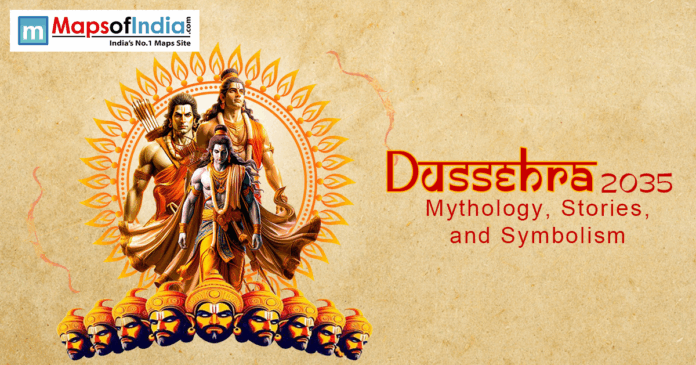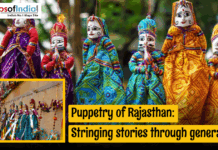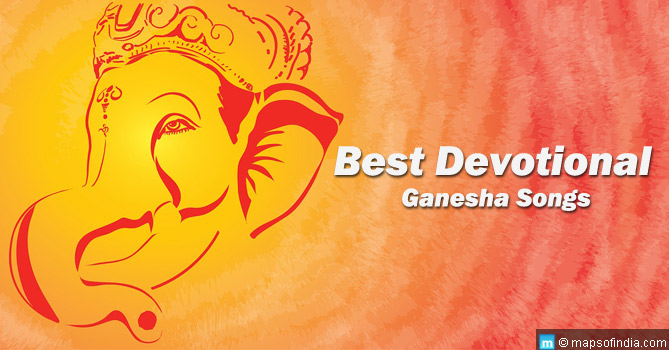Among the festivals that are celebrated in India, Dussehra or Vijayadashami is one of the festivals that are celebrated with a lot of vivid rituals, huge processions and merry making. Dussehra is a monumental festival of good and evil, and takes place in the month of Ashwin (September-October) and is closely tied to Indian mythology and Indian culture. But above the commercial fairs, the colour processions, and the effigies of the underworld, there are profound undertones and the intergenerational intrigues of Dussehra. We will discuss the mythology and stories, as well as the hidden messages of this mythical festival.
The Mythological Origins of Dussehra
Dussehra is a name that is based on the meaning of the word Vijaya, which means victory and Dashami, which means on the tenth day of the Navratri festival. It has several levels of mythology, but the best known is the myth of Lord Rama and Ravana, as the myth is found in the epic Ramayana. Ravana was the tyrannical and arrogant demon king of Lanka who was ten-headed. Sita, the wife of Lord Rama, was carried off by him, and as a result an immortal battle was fought. The 10th day is when Lord Rama kills Ravana, and this is a sign of good defeating evil.
The other myth is that Dussehra is connected to the Goddess Durga, the powerful goddess who had to fight the buffalo demon, Mahishasura. It is a tale of strength, courage and superhuman powers of Durga to overcome evil. In this case, Dussehra is the final day of a nine-day festival known as Navratri, during which individuals honour Durga in her nine forms and rejoice on the 10th day.
Stories That Define Dussehra
1. Rama and Ravana
In the Dussehra festival, in northern India, the story of Rama and Ravana takes centre stage. It is narrated in the Ramayana that with the help of his loyal brother Lakshmana and the devout Hanuman, lord Rama waged a very fierce war in Lanka after Ravana kidnapped Sita. The act of burning the effigy of Ravana during Dussehra is the annihilation of evil and moral corruption and provides people with a reminder of what truth, courage, and justice are.
2. Goddess Durga and Mahishasura
Dussehra is also directly associated with Durga Puja in particular in West Bengal, Assam, Odisha and Karnataka in eastern and southern India. Mahishasura was a shape-changing demon, and he had created chaos in the heavens. The gods created Goddess Durga, who battled with the Mahishasura over a period of nine days and nights, and defeated him on the tenth night. Dussehra, in this case, translates to the final victory of the divine power over the demon forces.
3. Alternative Legends
Other regional stories are also mixed with Dussehra mythology. Dussehra is observed in other parts of India as the day when Parasurama conquered the corrupt Kshatriya kings. In Maharashtra, tools, vehicles, and weapons are also typically worshipped, and the festival is associated with strength and defence. The general theme in all these stories is that good triumphs over evil.
Symbolism of Dussehra
Dussehra is not merely a celebration; it is a festival full of symbolic meaning:
- Victory of Good Over Evil: The main theme is the moral triumph of goodness over the forces of evil, and teaches the lessons of bravery, sincerity, and honesty.
- Renewal and New Beginnings: It is believed to be an auspicious day, and a lot of people embark on starting a new venture, business or journey on Dussehra.
- Unity and Community Bonding: Dussehra fairs, processions and community gatherings help to create unity and social harmony.
- Inner Strength: The festival encourages people to overcome their inner vices, including greed, anger, and pride, and encourages personal development and moral progress.
How Dussehra 2025 Will Be Celebrated
Dussehra 2025 promises grandeur and enthusiasm, with celebrations varying across regions:
- Northern India: Massive effigies of Ravana, Meghnath and Kumbhkaran will be burnt with fireworks, cultural performances and dramatic reenactment of the Ramayana.
- Eastern India: Durga Puja pandals in West Bengal, Assam and Odisha will feature elaborate idols of Goddess Durga destroying Mahishasura, rituals, dances and artistic displays of millions of people.
- Southern India: Residents rejoice by venerating arms, carrying out special pujas and holding colourful processions of gods.
The Modern Relevance of Dussehra
Although Dussehra has its basis in mythology, the teaching is also applicable in modern life. The fight between Durga and Mahishasura, or Rama and Ravana, is a reflection of what is encountered in everyday life- overcoming negativity, injustice and moral dilemmas. The festival makes one think about values and builds courage and hope in how humanity can overcome the odds.
Dussehra also enhances the cultural tourism, encourages the traditional arts and enhances local economies by use of fairs, crafts and celebrations. It reminds the people in a busy world of the fine heritage of India and the eternal message of morality and justice.
Conclusion
The Dussehra 2025 is not a festival of lights, colours and happiness and joy, but a festival of mythology, stories, and intense symbolism. Whether it is the epic tale of how Lord Rama conquered Ravana, Goddess Durga conquering Mahishasura or even the local mythology that discusses heroism and good, Dussehra causes people to embrace goodness and courage. Families gather and communities are made happy, and traditions are nourished. The festival still has one very universal lesson: though evil might appear fierce, good always succeeds.
This Dussehra, we should not only celebrate it festively, but in thought and in the spirit of the virtues of truth, strength, and moral victory, which have lived through the ages.





